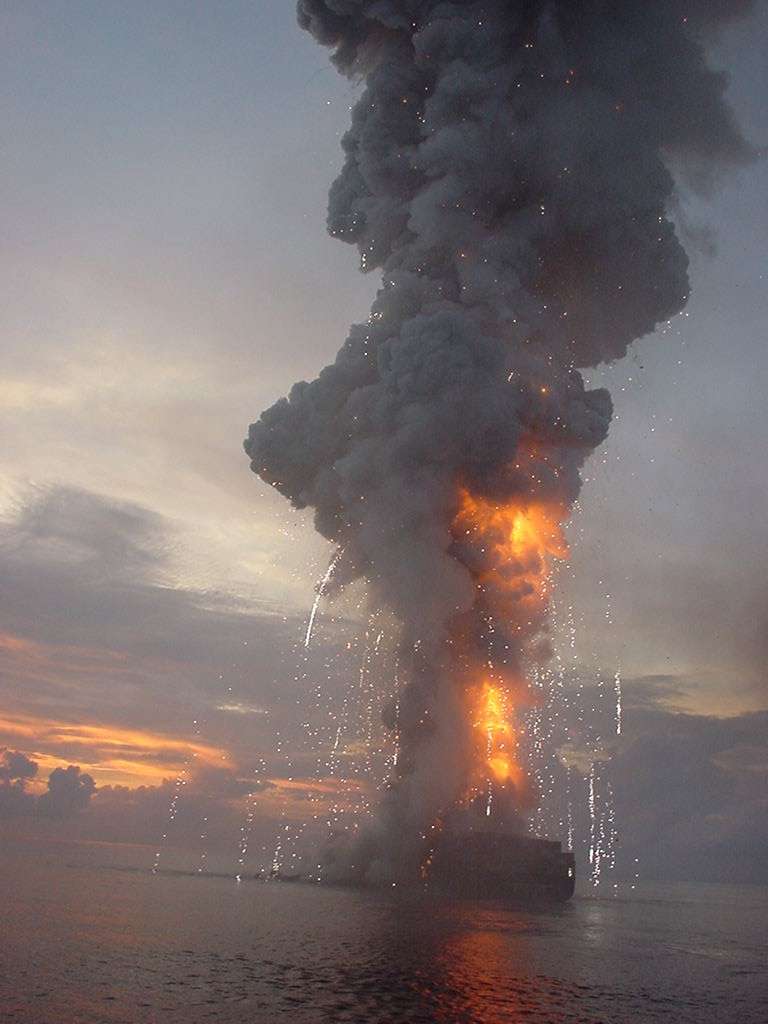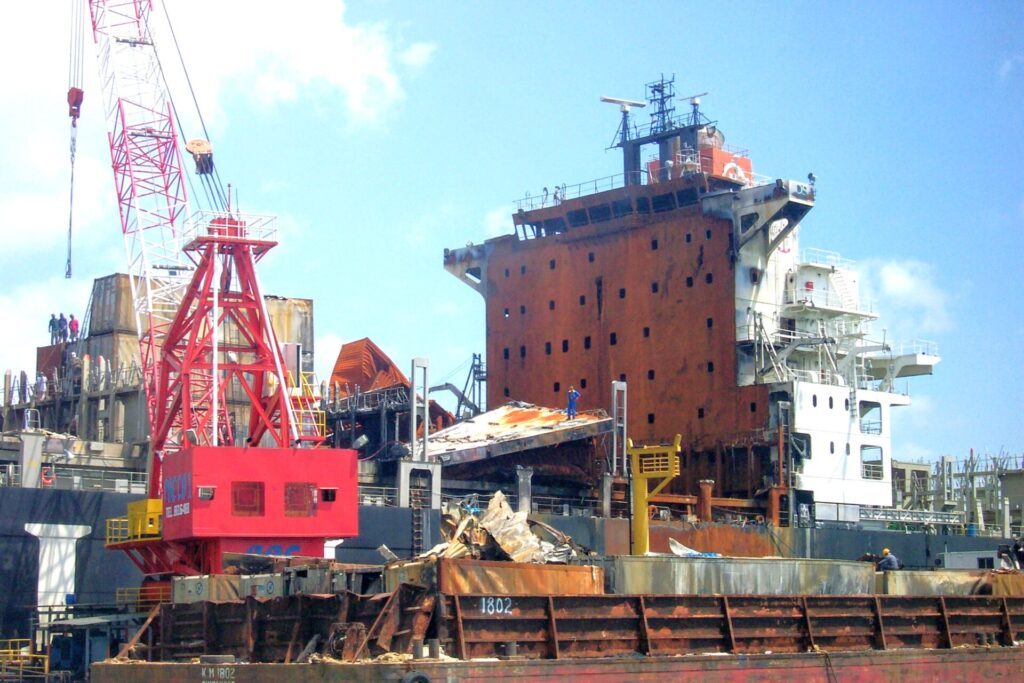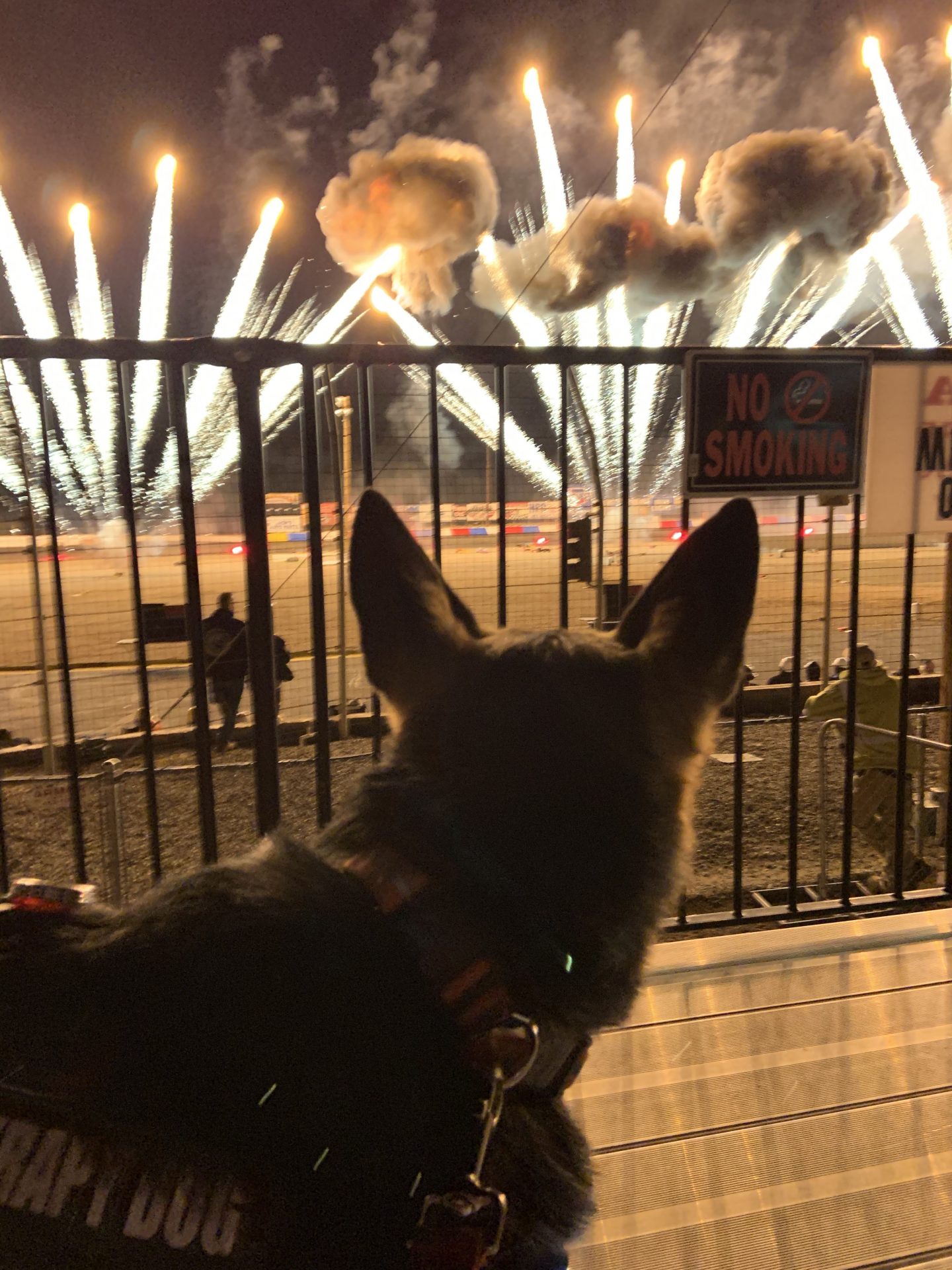
This is one of a number of photos of this explosion taken by the Ship’s Master from aboard a salvage vessel. When the photos of this explosion went around the world various news sources described it as a “fireworks explosion”, however to anyone that knows fireworks, it is not a fireworks explosion.
Eight (8) of the sixteen (16) slot charters that carried fireworks aboard ocean container vessels subsequently banned any and all shipments of fireworks aboard their vessels, resulting in significant increase in shipping rates and constriction of available slots aboard container vessels, especially for FIREWORKS UN0335 1.3G
Here are the problems with the conclusion this is a “fireworks explosion” based on these photos:
First, 40 foot containers of fireworks always have thousands of different fireworks devices, which typically result in multiple smaller explosions, building to a single large explosion, followed by many more smaller explosions.
Second, a container of fireworks rarely if ever has a single type or style of fireworks, so there would be multiple colors (red and green being the most common) and multiple effects. rather than a single color (silver) and a single effect.
Third, typical fireworks stars burn only for a few seconds and even custom stars for the largest fireworks shells in the world burn for only about 10 seconds. Silver in fireworks are typically created using flakes of aluminum, magnesium or titanium that only burn for portions of a second and would never burn long enough to rise up this high and then trail all the way back to the sea. Only large pieces of one of these metals can burn long enough to reach the height of this explosion and then trail burning effects all the way back to the sea.
Fireworks are not stowed below decks or by the accommodation. They are stowed above decks near the bow (Holds 1-3). There were no containers of fireworks stowed below decks or anywhere other than Holds 1-3.
Finally, there were two (2) containers of magnesium ingots stowed in Hold 6, which would account for the single, silver color and the long duration time of the silver effects all the way to the top down to the sea.
The radiant heat from the fires above Hold 6 and the adjacent Hold 5, combined with the confinement of the six (6) 30 ton hatches pinned in place and the stacked containers above, would be more than sufficient to result in a fuel-air explosion of the general cargo consisting of carbon based materials (Note the orange flame and black smoke indicative of carbon fuels) and the magnesium ingots.
The M/V Hanjin Pennsylvania was a 930 foot (282 m), 50,242 metric ton container vessel with a capacity of 4,389 Twenty-foot equivalency units (TEUs) on its 5th voyage from Asia to Europe. It was loaded with as many as 8 levels of containers stowed above decks and 14 levels of containers below decks.
Holds 1-6 are in front of the accommodation (The bridge and crew quarters) and general cargo is stowed below decks. Refrigerated cargo is stowed above decks where the crew can monitor and maintain the refrigeration units, which have both electric and diesel power units.
Hazardous materials, like chemicals, batteries, fireworks, etc. are stowed above decks near the bow (Holds 1-3) so they are away from the accommodation and the machinery. This also keeps them out of the holds below decks where they are confined by the hatches and containers above decks.
Holds 7 and 8 are behind the accommodation and above the machinery for general cargo.
There were over 50 containers of declared fireworks classified for transportation purposes as FIREWORKS UN0336 1.4G on board and stowed above decks in Holds 1-3. These types of fireworks devices are typically the smaller fireworks packaged for retail sales to consumers.
These shipments were bound for sale in Europe for the New Year’s Eve holiday, although some shipments are misdeclared and should be classified as FIREWORKS UN0336 1.3G or FIREWORKS UN0333 1.1G, which would be stowed in the same manner.
THE INITIAL FIRE
About 6:00 AM local time on November 11, 2002 and 88 miles (141 km) off the coast of Sri Lanka, there was a fire in a container stowed above deck on the port side of Hold 4. Two sailors apparently attempted to fight the fire when there was an explosion. One sailor was killed and the other went missing, presumably blown overboard by the blast.
The fire then swept to other containers, including some stowed above deck in Hold 3 that contained fireworks, which began to go off as the fires reach the contents. The crew fought the fires as best they could under the circumstances and salvage tugs were dispatched to assist.
FIRES ABOARD CONTAINER SHIPS
One of the challenges with fires aboard a container vessel is the difficulty to suppress fires inside the steel containers. There is limited space between the rows of stacked containers, which are all enclosed.
As the fires spread from container to container and build in intensity, the radiant heat will ignite the contents of other containers. This often spreads the fire further and faster than fire fighting efforts can manage.
Compounding the challenge with fire fighting on container vessels is the radiant heat will also spread the fires to containers stowed below decks. And then fires will spread via radiant heat from hold to hold.
FIRES BURNED FOR 4 DAYS
Over the next 4 days the fires raged both above and below decks as tons of water were poured onto the vessel from the tugs. The ship was abandoned except for a small crew that maintained the machinery and the pumps.
Fireworks in some containers stowed above decks exploded and shot out of the containers during these fire fighting efforts. Over the days of water being poured onto the burning containers, the ship took on so much water that it settled very low in the water.
THE “FIREWORKS” EXPLOSION
Then on November 15, 2002 there was a massive explosion in Hold 6 in front of the accommodation. This explosion was so powerful it tore 30 ton hatches off their pins and tossed some of them and stacks of loaded containers into the sea.
The photos of this explosion were described as a “fireworks explosion, however it only looked like a fireworks explosion to the untrained eye.
MY INVESTIGATION
During my investigation, I managed to obtain the manifest for this sailing that showed there were two (2) containers of magnesium ingots stowed below decks in Hold 6. The manifest also showed no containers of fireworks stowed above deck in Hold 4.
The photos and descriptions of the initial fire and explosion of the single container above Deck in Hold 4 was more like a fire and explosion of calcium hypochlorite rather than any types of fireworks devices. This is a chemical that is used to purifying water and in swimming pools and is sensitive to both heat and moisture
Calcium hypochlorite can start fires and explode, especially when confined by itself, packaging, in a steel container or any combination. Thus it requires special handling and stowage, especially when carried by a vessel sailing on the ocean subject to sea spray and rain squalls along the equator.
This special handling and stowage adds to the cost of shipping. For companies that ship calcium hypochlorite under INCO terms Cost, Insurance, and Freight (CIF), it means they must pay more to ship their chemicals to customers. As a result, there is an incentive for shippers to not declare their shipments as hazardous materials, or choose a hazardous materials classification that costs less to ship, but is not handled and stowed as required.
There are a number of examples of containers of calcium hypochlorite that experienced fire and explosions aboard other container vessels before and after the initial fire and explosion aboard the M/V Hanjin Pennsylvania. In some instances the calcium hypochlorite was declared and in others it was considered “rogue”. Subsequent investigations revealed the stability of the calcium hypochlorite varies and the way it is packaged is also an issue.
Other suspected or known fires and explosions of calcium hypochlorite aboard container vessels include: M/V Aconcagua (1998), M/V Charlotte Maersk (2010), M/V CMA Djakarta (1999), M/V Contship France (1997), M/V DG Harmony (1998), M/V KMTC Hongkong (2019), M/V Maersk Mombasa (1998), M/V Mass (1997), M/V Recife (1991), M/V Sea Express (1998), M/V Tiger Wave (1997), and the M/V Zim Haifa (2007).
Maersk one of the largest ocean shipping carriers in the world, banned the transport of calcium hypochlorite in August 2015. Bans alone do little to prevent hazardous materials from being misdeclared because the system relies on the integrity of the shipper to properly classify and declare their cargos.
THE AFTERMATH
The M/V Hanjin Pennsylvania was declared a total loss and general average was declared. General average is a method of spreading the loss out to all of the parties, even if their cargo was untouched.
The vessel was towed back to Singapore for the final survey and damage assessment. Sound containers were unloaded and surveyed for internal damage, including most of the containers of fireworks. These are auctioned off to the highest bidders, with with the proceeds used to offset the loss.
The financial loss was $235 million, which was the highest maritime loss up to that point in time. The hull was eventually refurbished and sailed for various ocean carriers until 2016 when it was scrapped.
Shortly after the incident, I was commissioned by the National Fireworks Association (NFA) as an independent expert to investigate the cause and submit a report with my findings. I was dispatched to Singapore where the vessel had been towed for salvage. I surveyed the vessel from a small boat and some of the containers in Singapore, including the surviving containers of fireworks.
I also met with various officials and others to gather information. The process of a ship being salvaged and the payment of damage claims is very interesting to say the least!
Later, I spent a month visiting shipping and fireworks facilities and met with officials in Seoul, Shanghai, Beijing, Liuyang, Changsha, Guangdong, Hong Kong and Los Angeles in order to trace fireworks shipments from the factories through the supply chain to ports in the USA.
My report “M/V Hanjin Pennsylvania : Explosions at Sea” was submitted to the NFA in September 2003 and published in the Proceedings of the 7th International Symposium on Fireworks, October 6 -10, 2003 Valencia, Spain.

The report has been referenced by a number of organizations and agencies including Lloyds of London and the Formal Safety Assessment (FSA) submitted by Denmark to the International Maritime Organization (MTO) Maritime Safety Committee in September of 2009.
M/V Hanjin Pennsylvania: Explosions at Sea Final Report
M/V Hanjin Pennsylvania: Explosions at Sea Final Report PICTURES
